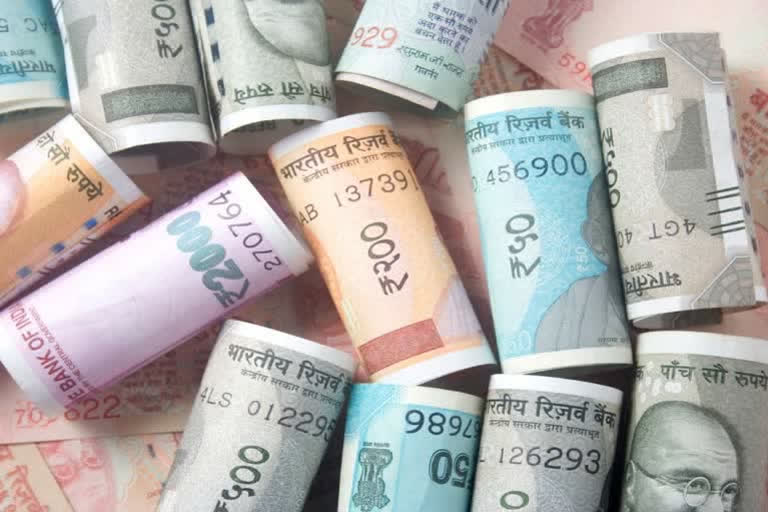Hyderabad: Covid has overwhelmed the world economy. The Indian economy suffered a lot as a result of the long-running lockdown to control the epidemic. Millions lost their jobs; revenues fell. The result was a negative growth rate in 2020-21.
Direct cash transfer is crucial
The latest estimate by the Reserve Bank is that the growth rate may be around (-) 7.5 per cent. Under these circumstances, the Central Government has initiated economic stimulus measures under Atmanirbhar Bharat to steer the economy back on track. The total stimulus value announced so far is Rs 29,87,647 crore.
It is 15 per cent of GDP. Of which the share of the Central Government is nine per cent; the rest was announced by the RBI in various forms. The first package targeted the economically weaker sections to support them. It provided incentives, especially for small businesses, in the form of a ‘credit guarantee’ scheme. Attempts were made to increase private consumption through the second package. The main focus was on supply factors in the economy.
Consumer demand, however, has been playing a key role in the country's economic growth for some years. It had been shrinking for some time. Private end consumer spending growth rate fell to 3.1 per cent -- lowest in 18-quarters. It also hit a seven-quarter low of 57.7 per cent in GDP. In this predicament, in order to stimulate economic growth, the factors that stimulate demand are more important than the supply factors in the economy.
Recognizing this, the government has prioritized policies that stimulate economic growth in the third stimulus measures. It focused on multiple sectors such as the labour market, stressful sectors, social welfare, manufacturing, housing, infrastructure, exports, and agriculture. The main purpose is to stimulate demand in the system, especially by promoting the housing sector.
Stagnated demand
The demand made by just 10 crore people at the top of the social and economic structure (pyramid) for the use of various goods and services has so far been mainly affecting the development of the country. Their consumption demand has stagnated as their needs have been met. This is the reason why the demand for consumer goods in the country, including vehicles and houses, is relatively weak at present. Exactly at this juncture a catastrophe in the form of Covid surrounded the country’s economy and caused endless damage. In this situation, the Centre has chosen the housing sector as the stimulus for economic revival.
More than 4,50,000 units of homes under various stages of construction were on the unsold list in seven major cities as of the end of September this year. Around Rs 3.7 lakh crore investments of realtors was stuck in these units. These incentives have made it possible for real estate dealers to provide affordable housing to homebuyers without incurring additional taxes, thereby allowing them to sell their homes lying without demand. If support is given to builders to complete half-finished structures, it will play a major role in attracting workers back to urban housing work who left cities in the wake of the Corona crisis. It is good for the real estate industry. It will have a positive impact on many sectors and revive the economy.
Fiscal deficit anxiety is unnecessary
According to the IMF, India's GVA (Gross Value Added) is likely to shrink by 10.3 per cent this fiscal. India is a demand-based economy. By increasing the purchasing power of the people, the economy can be driven forward. The goal of economic stimulus is to increase consumer demand. The required large government spending is mainly invisible in economic stimulus 1.0, 2.0.
Though some of the deficit may be covered in stimulus 3.0, it is difficult to estimate its extent now. The crunch in government revenue and the resulting growth in deficit may also have contributed to the government's reluctance to spend heavily. The joint fiscal deficit between the Centre and the states is projected to widen from 8.2 per cent to 13.1 per cent of GDP. This is not the right time for the government to cut spending worrying about a widening fiscal deficit.
The demand can be increased by effecting direct cash transfer to the accounts of the poor. Government spending should increase on sectors that employ a large number of workers and on infrastructure projects that use heavily productive tools. Product-Linked Incentives (PLI) is announced for ten sectors. The job subsidy scheme focuses only on organized sector employees earning less than Rs 15,000 per month.
In addition to the time schedules in daily work, this should be linked only to productive tasks and creation of assets. As a result, the employment guarantee scheme may reduce the pressure on wages in the agricultural sector. It contributes to the creation of balanced consumer demand in the villages. In addition to this, if the PM Garib Kalyan Rojgari Yojana and creation of rural infrastructure can be implemented rapidly, the consumption demand of the people living at the bottom of the ‘income pyramid’ can increase rapidly.
Support to the housing sector
The real estate sector is the second largest employer in the country after the agricultural sector. It is expected to employ six crore 70 lakh people by 2022 and account for 13 per cent of GDP by 2025. Therefore, the Centre has announced a budget assistance of Rs 18,000 crore for home buyers and sellers as part of the Prime Minister's Awas Yojana. This is in addition to the Rs 8,000 crore announced in the 2020 budget. The centre has reduced the performance security deposit amount from five to three per cent. It also relaxed income tax regulations on home sales and purchases and announced tax incentives.
(Dr. Kalluru Shivareddy, Professor at Gokhale Institute of Politics and Economics, Pune)



